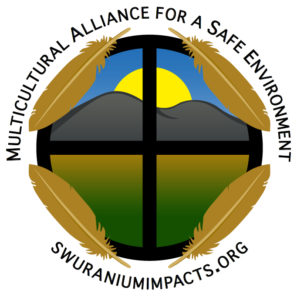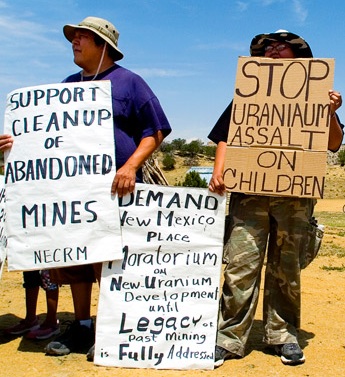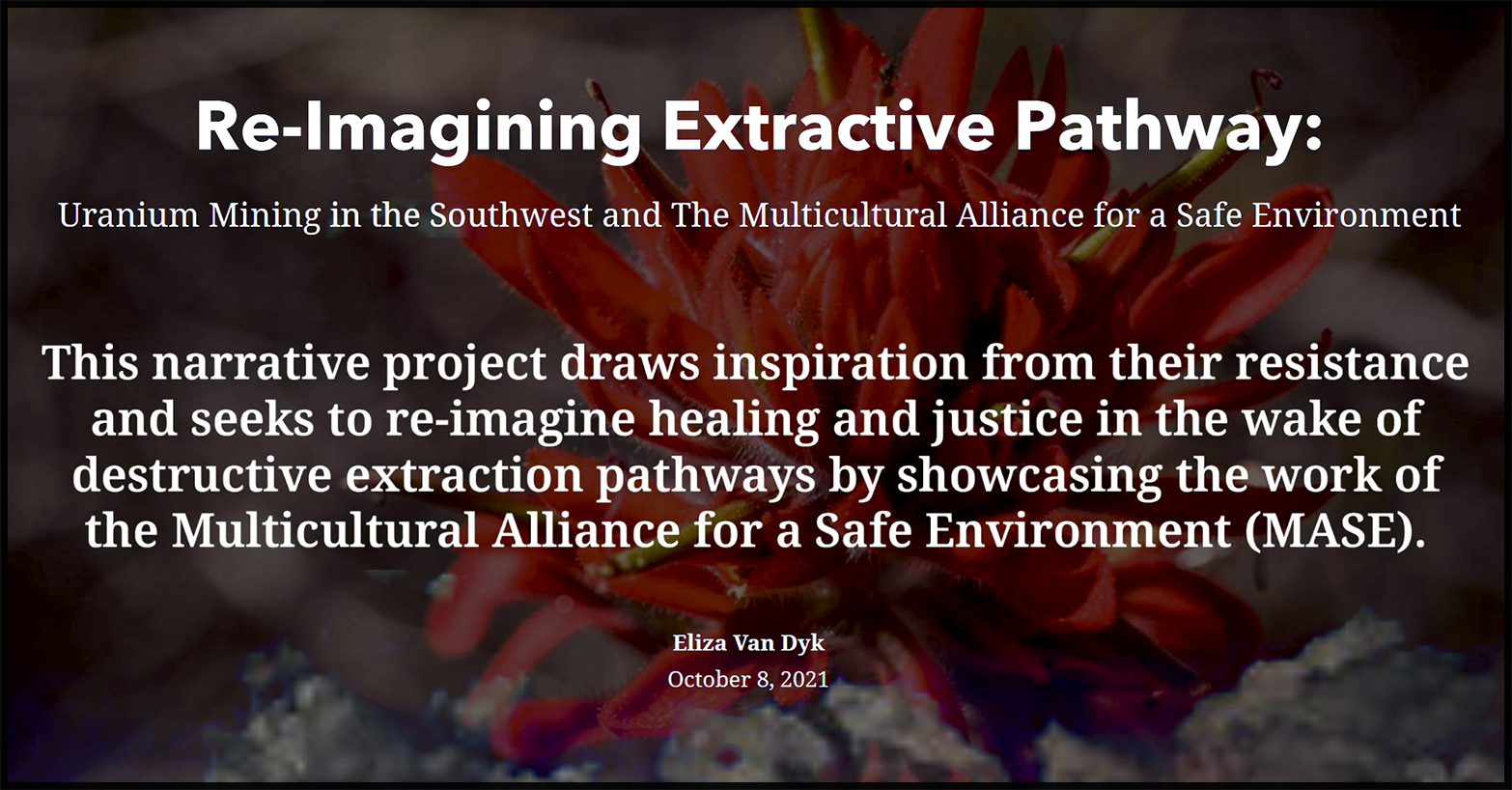Mining on Navajo Nation
To view a copy of the Diné Natural Resources Protection Act of 2005, click here: Navajo Ban
A Legacy of Destruction and No Accountability
The nuclear industry has left a devastating legacy of pollution, illness and death.
Uranium mining began in earnest on Navajo land during the Grants Uranium Boom from the 1950s – 1980s. The NM State Mining and Minerals Division lists 259 uranium production mines and 400 uranium exploration sites with a concentration in the Grants Belt.
When most of these ‘legacy’ mines were operating the Clean Water Act hadn’t been passed and the New Mexico Environment Department didn’t exist. Of the 259 uranium production mines, 137 have no record of any kind of cleanup work.
Navajo families continue to live with the radioactive pollution and increased health risks from past uranium mining and milling, including the United Nuclear Corporation (UNC) uranium mill tailings spill into the Puerco River, in the Church Rock area in 1979. This was the largest release of radioactive waste in U.S. history. URI/HRI which acquired this site from UNC in 1993 has still not committed to a full cleanup of the Old Church Rock Mine and the spill.
Today, HRI/URI claims that in-situ mining is safe. But communities like Kingsville TX, disagree. URI has been unable to restore the water quality contaminated by the in-situ mining there.
In-situ leaching releases large amounts of radon, and produces waste slurries and waste water during recovery of the uranium from the liquid. Dangerous radioactive heavy metals are mobilized in this process. It is technologically impossible to restore natural groundwater conditions after leaching operations have been completed.
Navajo Ban
The Navajo Nation Government unanimously passed a Uranium Mining Ban on tribal lands in April of 2005. Despite this ban, mining corporations like Hydro Resources Inc. (HRI) and Uranium Resources Inc. (URI) have relentlessly pursued permits for new mines, including mines on native sacred sites in New Mexico.
There is NO NEED for new uranium mining. The value of uranium has been artificially bolstered by false promises of “nuclear power renaissance”. The reality is that current nuclear reactors are in their final years of operation and have adequate fuel. No nuclear plants have been licensed, constructed or are even under construction in the US. The Obama Administration would like to change that and this is one step in the process of expanding the nuclear industry – both power and weapons. There are proposals for 22 new uranium mines, billions for weapons expansion and a number of nuclear power plants have been proposed. This is the wrong direction.
On December 2, 2006 the IWUS Declaration Final of the Indigenous World Uranium Summit was passed at Window Rock, Navajo Nation, USA

Dreaming New Mexico
NEW MEXICO ENVIRONMENTAL JUSTICE FACTS
- Of 250 abandoned Uranium mines only about 130 have any record of clean up.
- Most New Mexicans spend four percent of their income on utility bills. Because New Mexico is the lowest income earner in the nation, about one in five families spends 20% of its income for electricity or gas.
- Over 10,000 New Mexicans, mostly Native American, have no electricity.
- About 40,000 New Mexican homes cannot afford weatherization.
- Navajo miners and civilians have suffered from uranium mining. The Navajo Nation has banned any future uranium mining and fights mining on adjacent lands.
- Galisteo Basin and northern New mexican counties have been threatened by predatory oil and gas contracts that can leave land owners with degraded land and possible health threats.
- Two coal-fired power plants are among the dirtiest in the nation for merucury and greenhouse gas emissions. Coal and gas rich San Juan county also has the highest cancer rates.
- Sulfur dioxide, nitrogen oxides, heavy metals, and radiactive particles from coal are worst in Bernalillo and San Juan Counties.
- Five energy-related superfund sites remain sources of harm (see map shown above).







